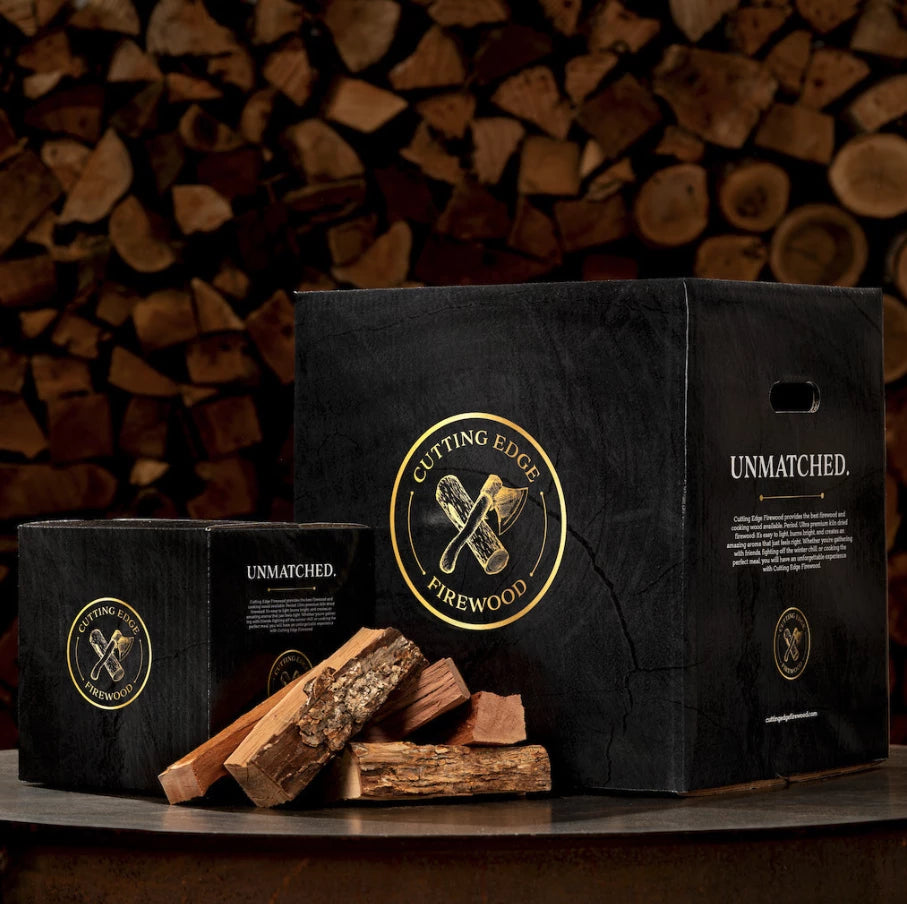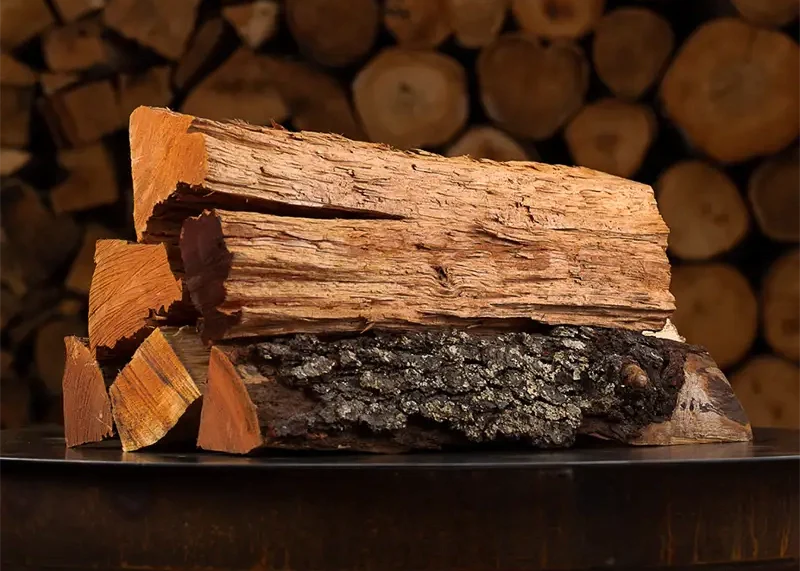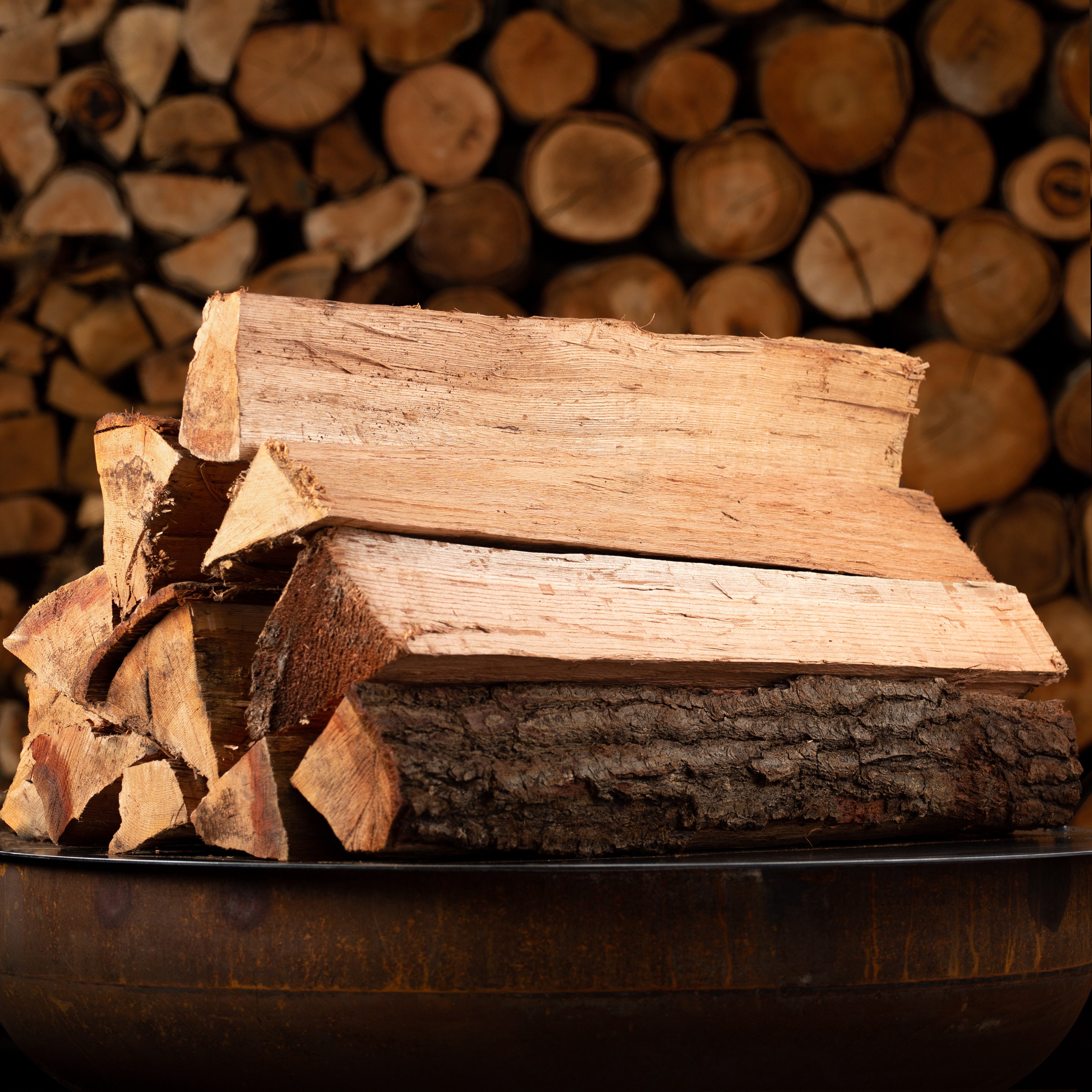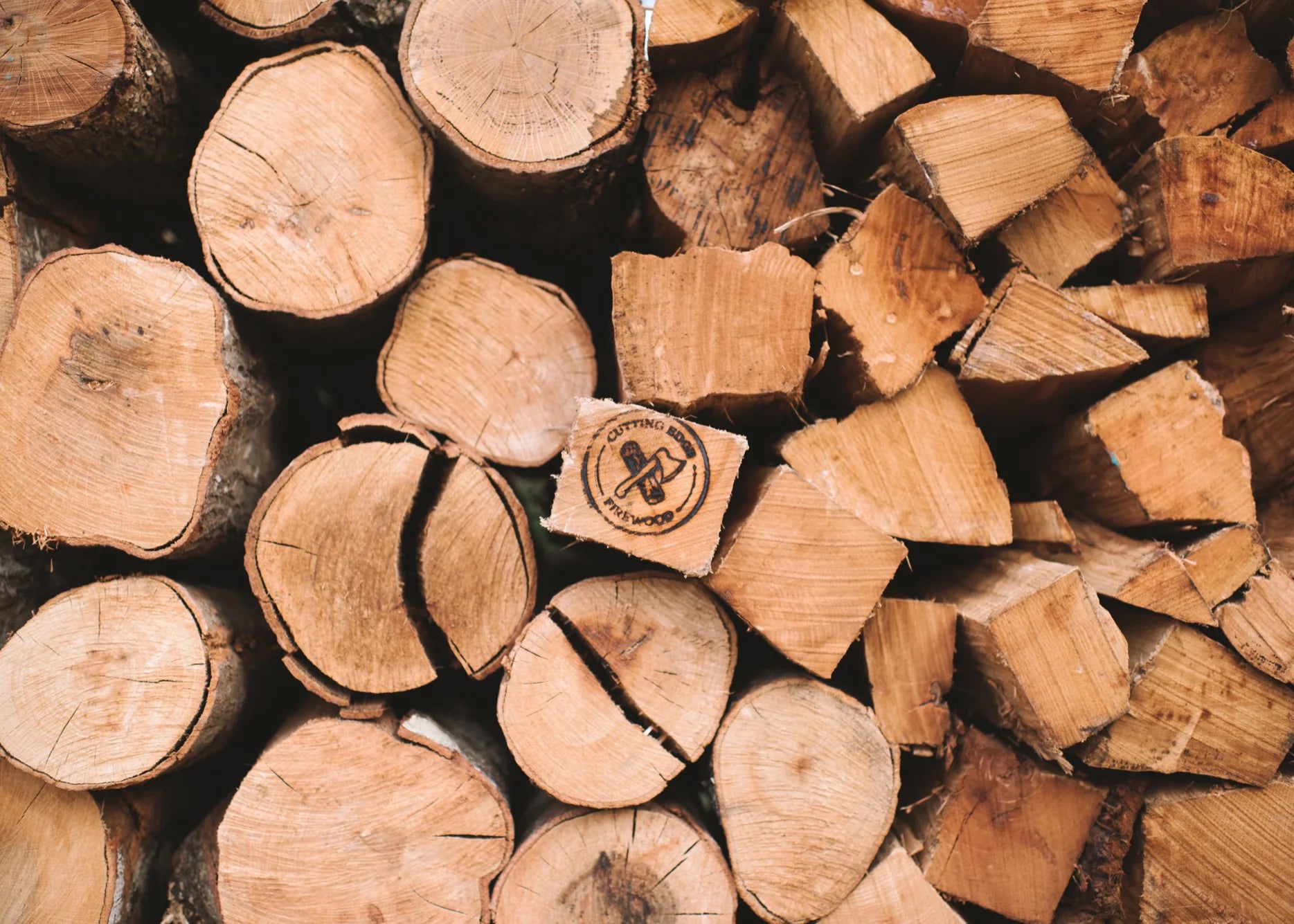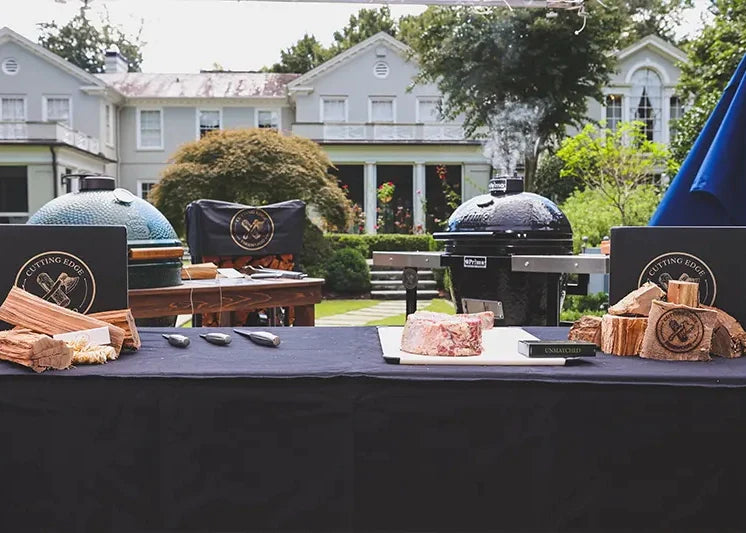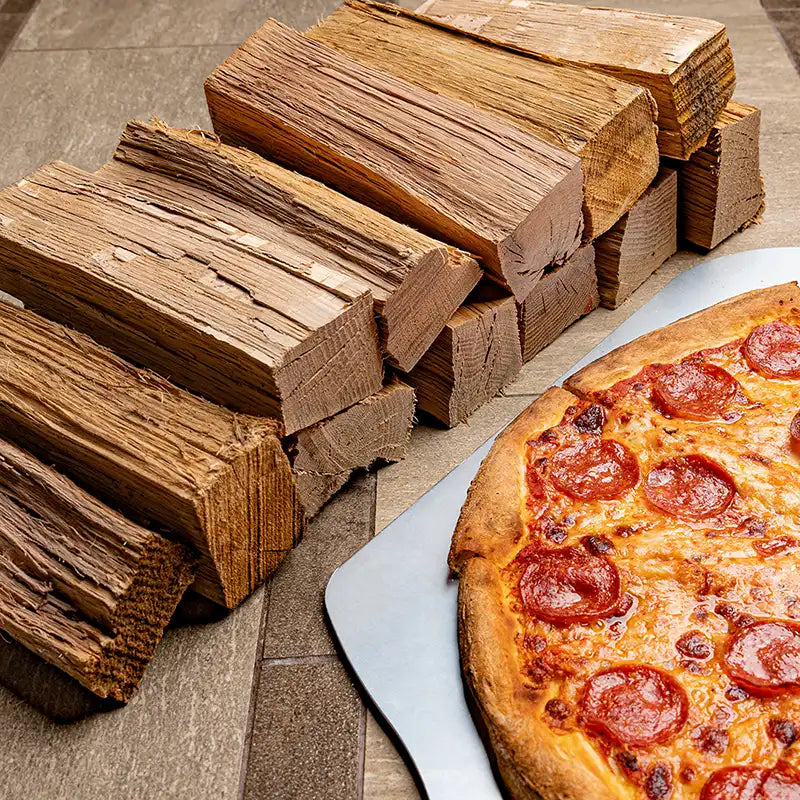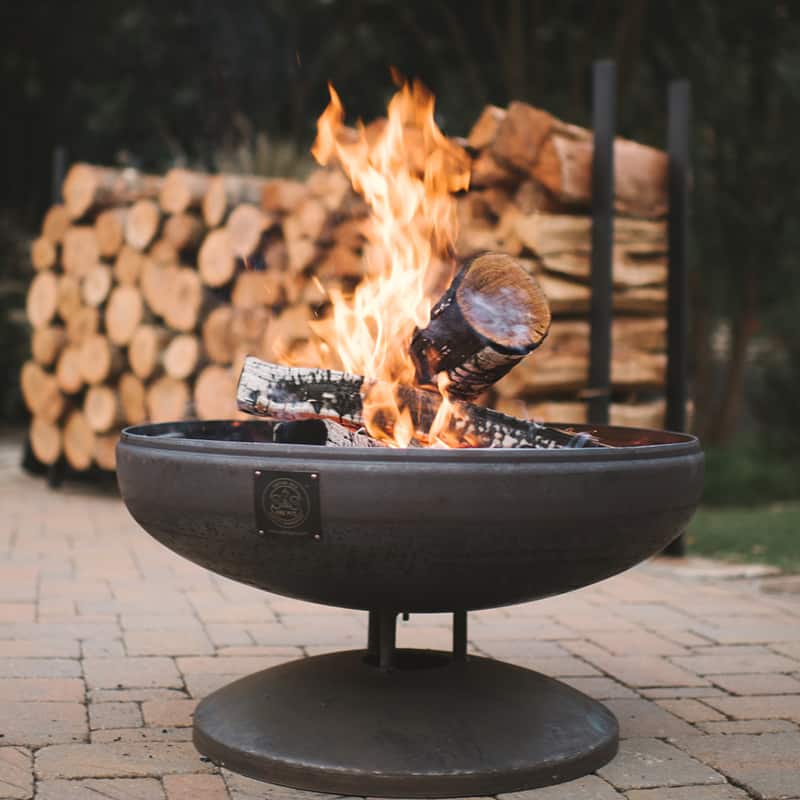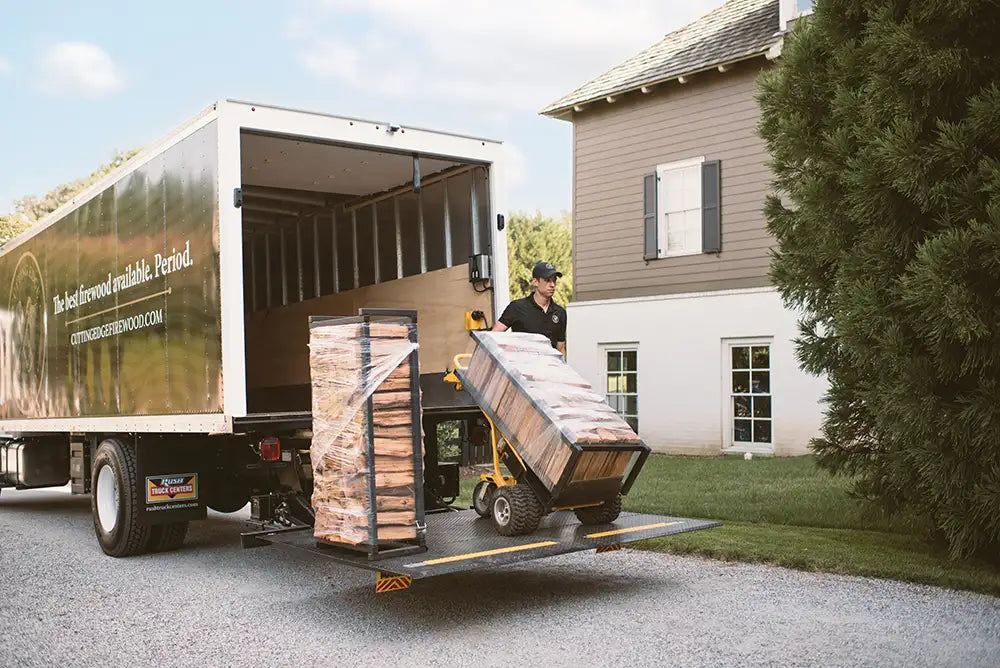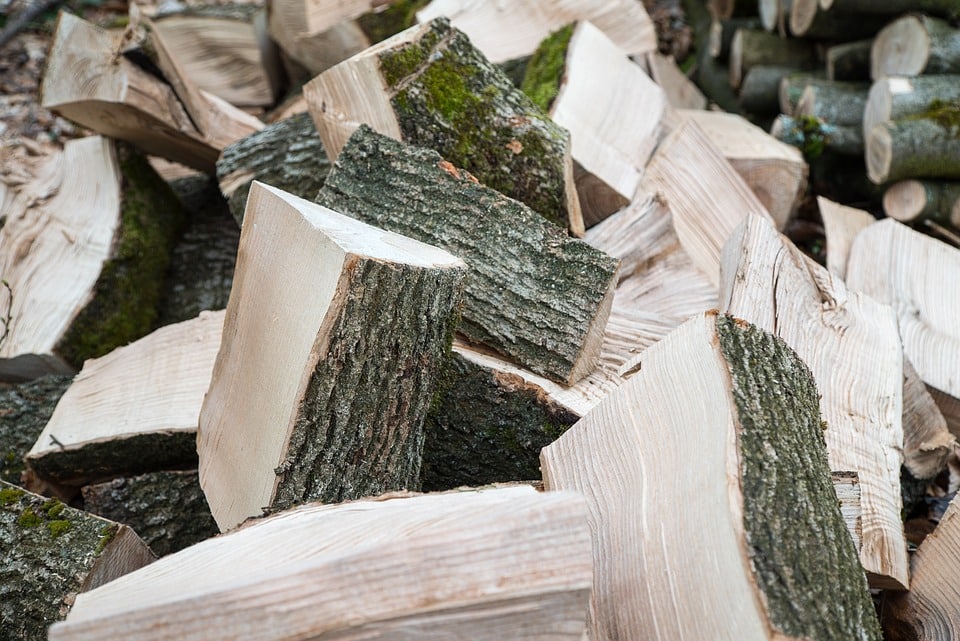Splitting is an important step to creating high-quality firewood or cooking wood. Whether you use an ax or a hydraulic log splitter, doing so creates smaller pieces of firewood that are easier to burn. If you're planning to split some wood in preparation of winter, though, you might be wondering if it's easier to split wet or dry wood.
The Purpose of Splitting Wood
Before we reveal whether wet or dry wood is easier to split, let's first take a closer look at the purpose of splitting wood. Splitting is performed primarily for the purpose of creating firewood that's easier to burn than whole logs. Many common tree species, including most hardwoods, have fire-resistant bark. The bark can still ignite, but it takes hotter temperatures than barkless wood. Splitting wood creates smaller pieces of wood with less bark, so they ignite and stay lit with greater ease than whole logs.
Splitting also expedites the drying or "seasoning" process. All firewood and cooking wood should be dry burning. Otherwise, it will produce an excessive amount of smoke and minimal heat. Leaving wood exposed to the outdoor air will typically dry it out within six to 12 months, assuming it's properly stacked and covered. Splitting wood, however, can speed up this process so that wood dries more quickly. Again, this is because splitting lowers the surface area of bark. With less bark covering the surface of split wood, moisture will evaporate from its pores more quickly.
Finally, splitting wood creates smaller pieces of firewood that are appropriate for most fire pits, fireplaces, grills, smokers and stoves. You may discover that whole logs are too large to fit inside these wood-burning accessories. Once split, though, the whole logs are cut into pieces about one-third of their original size.
Dry Wood Is Typically Easier to Split
Different tree species have different organic compositions. Some, for example, are denser than others, making them more difficult to split. Normally, though, you'll find that dry, seasoned wood is easier to split than wet wood. Regardless of the tree species from which it was harvested, dry wood contains less moisture, so there's less resistance when cutting and splitting it. An ax or log splitter blade will easily cut through dry wood thanks to its low moisture content.
Can I Split Wet Wood?
Absolutely! It may be slightly more difficult than splitting dry wood, but many people actually prefer to split wet wood because it encourages faster drying times. As mentioned earlier, split wood contains less bark, so moisture is released from it more quickly. A stack of whole logs can take a year or longer to fully season, whereas a similar-sized stack of split wood may take just six months to season. Because of this, it's not uncommon for individuals to split their wood immediately harvesting it, after which they can leave it to dry.

Use a Log Splitter for Wet Wood
If you struggle to split wet wood using an ax, consider investing in a log splitter. This machine lives up to its namesake by automating the otherwise laborious and time-consuming task of splitting wood. Log splitters typically feature a gas-powered engine that cuts through wood with 10 to 30 tons of force. You can easily split entire cords of wet or dry wood using a log splitter. It's a smart investment for anyone who regularly harvests their own wood.
The high cost of log splitters, however, may deter some people from buying them. A standard consumer-grade log splitter can cost anywhere from $500 to $5,000, with commercial-grade log splitters costing even more. Consider how much wood you intend to split to determine if a log splitter is worth the cost.
Some Types of Wood Are Easier to Split When Wet
Keep in mind that some types of wood are easier to split when wet. Oak, for example, is a popular hardwood that's easier to split when wet. When initially harvested, you can split wet or green oak without waiting for it to dry first. For most other species, though, you'll probably discover that dry wood is easier to split.
In Conclusion
The bottom line is that you can split both wet and dry wood. The latter is usually easier to split, though many people prefer to split the former so that it dries out more quickly. But if you use a log splitter, you shouldn't have trouble splitting either wet or dry wood.
If splitting firewood sounds too difficult, consider ordering firewood for sale from the experts here at Cutting Edge Firewood. We offer a wide variety of firewood and cooking wood, which you can order from our online store. All of our firewood comes split and ready to burn. If you live outside of Georgia, click the button below to order a firewood package.

